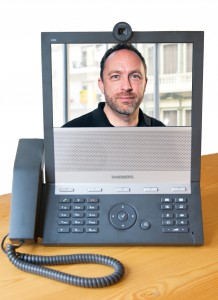3 Ways Health 2.0 Will Revolutionize Doctor/Patient Communication (Part 1)
The routine doctor’s visit hasn’t changed much in the past 100 years, even as medical science and technology have leapt ahead. You show up at the office, sign in at the desk, and catch up on your National Geographicuntil your name is called. Then you head to the back, tell the doctor what (if anything) ails you, and receive her expert diagnosis.
But is all of this efficient? Is it convenient and affordable to make a physical trip to the doctor’s office, and will you still go or just skip it if it’s not? Are you a reliable narrator when it comes to how you eat or sleep, or how much you exercise – perhaps your memory is poor, or you and your doctor don’t share a first language? Maybe you’re just embarrassed to tell the truth. What if something’s wrong on the inside, but you don’t have obvious, external symptoms?
Introducing: Health 2.0
These are the questions that Health 2.0 seeks to answer. Coined in the mid-2000s, the term describes the integration of modern, nonintrusive medical technology into the day-to-day lives of the average person. The concept continues to evolve, as new players enter the market and find original ways to adapt technology to the medical needs of their customers.
Indu Subaiaya, cofounder of the annual Health 2.0 conference, laid out three main qualifiers. To be considered Health 2.0, solutions must be:
- Adaptable technologies which easily allow others tools and applications to link and integrated with them, primarily through use of accessible APIs.
- Focused on the user experience bringing in the principles of user-center design.
- Data driven, in that they both create data and present data to the user in order to help improve decision making.
So, what changes does the future of healthcare hold? Let’s dive in.
- The Doctor Will See You Now
Does a doctor’s visit need to be in-person to be effective? With the advent of apps like Face Time and Skype, and tablets and Smart phones equipped with high-resolution, front-facing digital cameras, the answer is often “no”. While it’s not yet the norm, many doctors are booking virtual appointments for routine ailments, and entire practices, like Doctor on Demand and AnywhereCare, have sprung to life on this new frontier. Their web pages list consults for conditions like cold and flu symptoms, sports injuries, and eye issues; offering a virtual video consult for a flat fee. Patients “leave” the appointment with detailed treatment directions and, if needed, a prescription.

The limitations for this kind of visit are apparent: treatment for chronic or complex conditions like cancer will, of course, require face-to-face visits. But for simple, straightforward cases, these virtual alternatives may be a rare, “everybody wins” scenario. Patients can see a doctor without driving to his office, and can often save money in the process; doctors can see more patients, using these shorter visits and cutting the transition time between appointments; and health insurers, for their part, are covering these services, seeing both preventative (the more convenient it is, the more likely the patient gets treatment before things get worse) and economic (shorter, cheaper visits) benefits to the new model.
Maybe seeing your doctor remotely sounds great, but you know he’s going to ask you a bunch of questions: how’s your diet? Do you sleep well? How much exercise have you been getting? Maybe you don’t know the answers, or you’d just like the doctor to already have the information so you don’t have to tell him. Health 2.0 can help with that too, and part two of our series will show you how…


